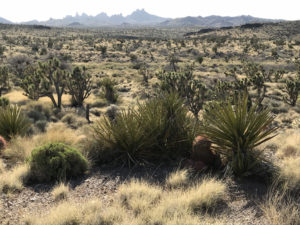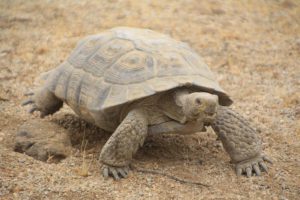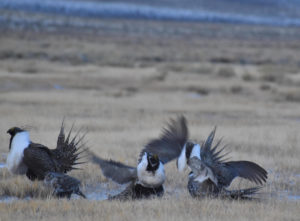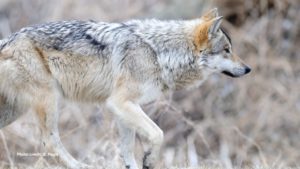For Immediate Release
June 11, 2020
Contact:
Paul Ruprecht, Western Watersheds Project, (208) 421-4637, paul@westernwatersheds.org
Scott Lake, Center for Biological Diversity, (802) 299-7495, slake@biologicaldiversity.org
RENO, Nev.― The Trump administration wants to allow intensive livestock grazing on 24 million acres of public land in Nevada ― roughly 10% of all Bureau of Land Management land ― in an effort to reduce wildfire risk, despite studies that show grazing increases fuel for fires.
The Bureau of Land Management’s proposal, released Wednesday, would authorize “targeted grazing” of nonnative annual grasses like cheatgrass as part of a Trump administration directive to reduce wildfire risk on public lands. The proposal is moving forward despite significant risks and a lack of scientific evidence that grazing can reduce fire risk.
“This approach will backfire,” said Paul Ruprecht, Nevada director for Western Watersheds Project. “Cows and sheep trample the soil crusts and eliminate native bunchgrasses that otherwise act as a barrier to cheatgrass invasion. Basically, livestock grazing rolls out the red carpet for cheatgrass to infest our public lands.”
Studies show increased grazing worsens cheatgrass infestations. Despite its massive scope, and the certainty of widespread and severe harm to wildlife habitats, the proposal is analyzed by the Trump administration in only an environmental assessment rather than a more comprehensive environmental impact statement.
“Putting more cows on more public lands isn’t a solution, it’s a recipe for more problems,” said Scott Lake, legal advocate at the Center for Biological Diversity. “Livestock grazing is what led to cheatgrass invasion in the first place, and it’s one of the main reasons why fires in the West have become more frequent and destructive. There’s no evidence that more of the same will reduce the prevalence of invasive grasses or restore sagebrush landscapes.”
A number of scientific papers describe the mechanisms of invasive annual grass establishment and spread in the Great Basin. For example, one recent paper found that exotic annual grasses increased with higher grazing intensity. Likewise, a study in central Nevada found no support for the notion that grazing can suppress cheatgrass.
Under the BLM’s proposal, targeted grazing would also be used to create fuel breaks. However, a comprehensive review of the fire science on fuel breaks throughout the West concluded that there is no solid evidence that fuel breaks reduce the extent or severity of rangeland fires. A second report examining the impacts of fuel breaks on wildlife habitats found that fuel breaks accelerate the invasion of cheatgrass, and that fuel breaks fragment and degrade sage-grouse habitats, leading to further declines of the imperiled species.
BLM will be holding a series of public meetings on this proposal and will accept public comments through July 9. More information is available at https://www.blm.gov/press-release/public-comment-sought-targeted-and-prescribed-grazing-environmental-assessment” https://www.blm.gov/press-release/public-comment-sought-targeted-and-prescribed-grazing-environmental-assessment.
Western Watersheds Project protects and restores western watersheds and wildlife through education, public policy initiatives, and legal advocacy.
The Center for Biological Diversity is a national, nonprofit conservation organization with more than 1.7 million members and online activists dedicated to the protection of endangered species and wild places.





